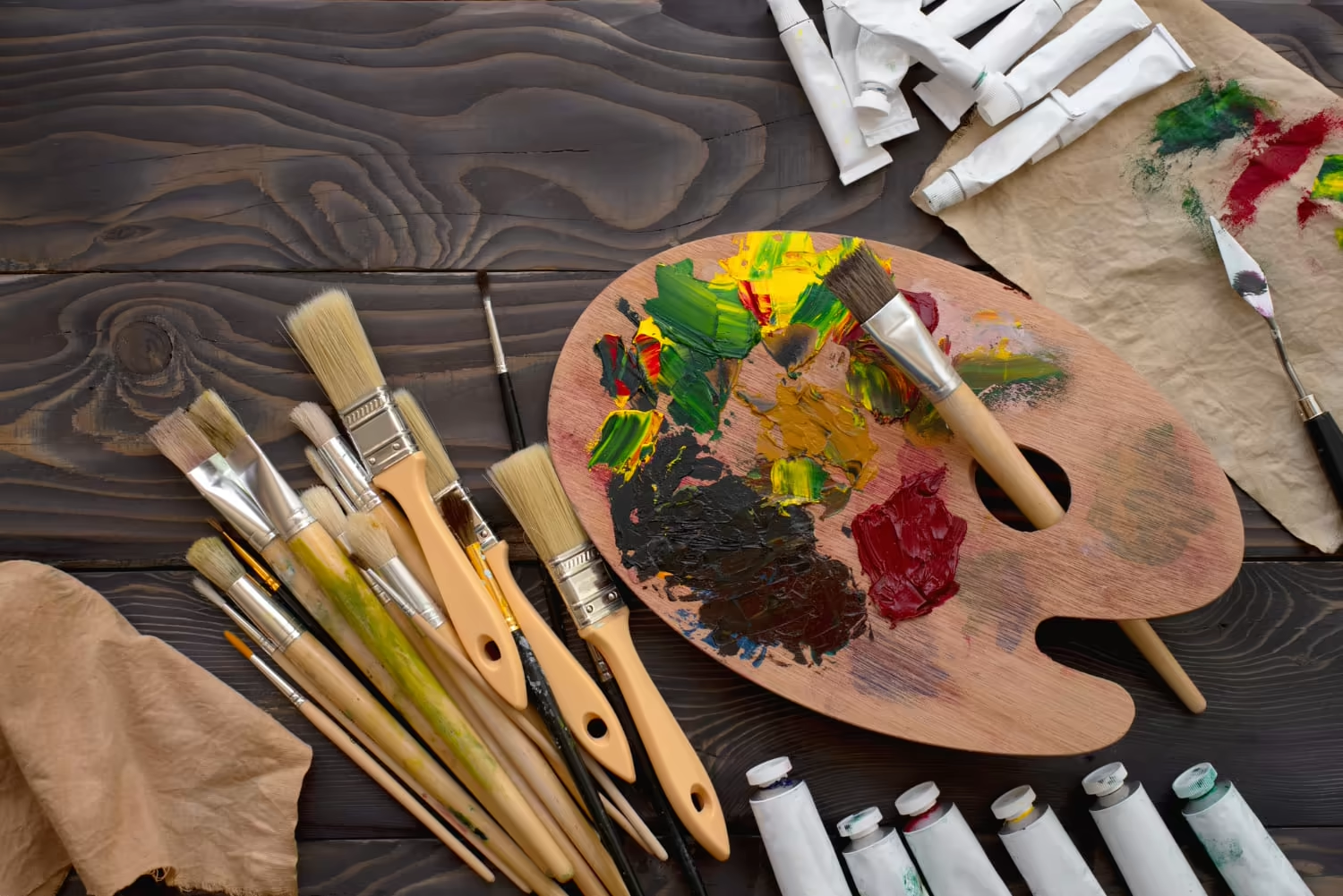Can you define creative expression? Expressing one’s thoughts, emotions, or ideas through artistic forms is the answer. Creative expression could be through paintings, drawings, writing, dancing, music and performances. These creative activities offer an opportunity to show others what one is thinking or feeling without using direct language.
Now that we know what it is and what outlets are used, the question is: Why is this beneficial for young people? Creative expression provides young people with an outlet to explore identity, process experiences, or simply connect with others. This love for creativity inspires some to find a career that allows them to channel their creative thoughts and energy into their work.
Although 75% of 18-25-year-olds are reportedly interested in having a creative career, research from Ravensbourne University London revealed that less than 25% of young people are supported in their decision or shown career paths to help them.
Still, the interest is strong. So, how does the arts inspire the next generation, and how will it continue? Keep reading as we explore some of the reasons.
The Role of Arts in Supporting Mental Wellbeing for Young People
Creative expression provides an avenue for young people to be and think creatively, and yet, there are other advantages. West Sussex Mind, for instance, shared that creative expression can be a healthy coping mechanism. An individual can channel their anxious or overwhelming feelings into something creative. Being able to channel these thoughts and feelings elsewhere allows people to handle their feelings better, thanks to healthier coping strategies.
Something you might have noticed is that the news often highlights that more young people are struggling with stress and anxiety. If you think about the past decade, we have seen on the news the number of young people experiencing mental health problems rapidly rise. The Health Foundation shared that the total number of mental health referrals to the NHS rose from 821,734 in 2020/21 to 1,288,653 in 2022/23. But how does art fit in?
Why has engaging in creative expression been linked to reducing stress levels and improving mood? Those who have the opportunity to create without judgment can help support emotional resilience and also encourages a more positive outlook. All of which could be beneficial for young people.
University Art Courses Connect Talent With Opportunity
After stumbling through the awkward corridors of school and college, young people face the inevitable "what next?" crossroads. University remains a well-trodden path for many. UCAS data showed that 2024 broke records for university acceptances. Although medicine and science-related courses are often the most popular, many of the creative-based courses still see a large number of students enrolling.
Of course, career opportunities are the primary reason many young people go to university. The social aspect is a bonus. However, there are other advantages to going to university. Many university programmes provide students with one-to-one feedback, access to professional-grade facilities and guidance on everything from materials to postgraduate options. Being able to access all of these valuable resources can help to share a student’s view on their potential and what their career plans could be.
Additionally, a degree’s structure offers consistency. The project work, regular tutorials, and group critiques help keep students engaged and accountable for their work. As the year passes by and the course comes to an end, many students walk away with a strong portfolio of work to their name, a good understanding of the industry (that will only get stronger with experience), and a clearer sense of where they are headed.
Before they get there, first they have to decide what they want to study!
Choosing to Study Fine Art at University Supports Long-Term Goals
There are many courses that provide a creative outlet. One of those options is to study Fine Art. It’s important to recognise deciding to study Fine Art at university is often based on one’s interest. It’s a step toward building a future in a field that values originality, thought, and communication. Studying Fine Art places students within a creative community, where collaboration and shared learning become part of the process. Being in this environment often leads to long-lasting professional and personal networks.
Many of the course’s classes will likely include portfolio development, curating, and exhibition planning, which prepare students for public presentations of their work and help encourage them to think more carefully about how their art connects with different audiences.
Mentorship, Funding, and Visibility Sustain Young Artists
Support can be in the form of encouragement, but practical access to opportunities is the real game-changer. Having access to financial help, exposure, and guidance all contribute to whether a young artist is able to continue developing their work.
Funding can especially make a noticeable difference. Studies and findings over the years have often highlighted the lack of creative opportunities for those from working-class backgrounds, especially compared to those who have access to private education. Thankfully, scholarships, bursaries, and small grants continue to relieve financial pressure, by freeing up time to focus on creating.
Of course, funding is beneficial, but so is mentorship. Speaking with those who have experience can reveal a wealth of information that can only be gained through experience. Mentorship programmes connect early-career creatives with experienced professionals who offer real-world advice. Thanks to these relationships, young people can make informed decisions about their practice, education, and career path. Being able to ask questions and receive honest feedback is often what keeps someone moving forward.
Last but certainly not least, we cannot forget about visibility. Visibility comes from exhibitions, online platforms, or published features - all of which allow young artists to be seen and heard. If their work can reach a wider audience, the result is an increase in momentum and doors opening. As you can imagine, if you combine funding, mentorship, and visibility, it can all help to make a difference to individuals seeking a career in the creative industry.
New Platforms Are Giving Youth a Voice Through Art
Speaking of visibility, today's young creators are living in a landscape that was unimaginable to previous generations. But what does this mean? Digital tools and platforms have democratised access, allowing emerging artists to build audiences, engage with cultural conversations, and develop distinctive voices without traditional gatekeepers’ blessing.
Although social media can be tracked back to the mid-90s, it was the mid-2000s, when Facebook launched that it truly took off. Today, social media is one of the most influential spaces for many young creatives. It serves its own gallery, allowing artists to share their process, promote events, and connect with others across disciplines. For many, it’s the first place their work is publicly viewed, and where many of their collaborations, commissions, or mentorships begin.
Yes, creatives do benefit from social media, but so do many businesses. Take a look at the recent findings from BT. Their findings revealed that 28% of small businesses across the UK generate more sales from social media than any other platform. Whilst this might seem like a small percentage, it is certainly one that small businesses and creatives should keep in mind.
Keep Creativity Moving and Support the Next Generation of Artists
Engagement in art will continue to shape how young people grow, think, and connect with the world around them—that’s difficult to deny. Since it will have such an impact, it’s important to recognise that creativity provides a valuable outlet for self-discovery and shared understanding, regardless of whether it is in education, community work, or digital expression. The next generation is already creating, questioning, and contributing. What they need is consistent support and a belief that what they’re building matters.



